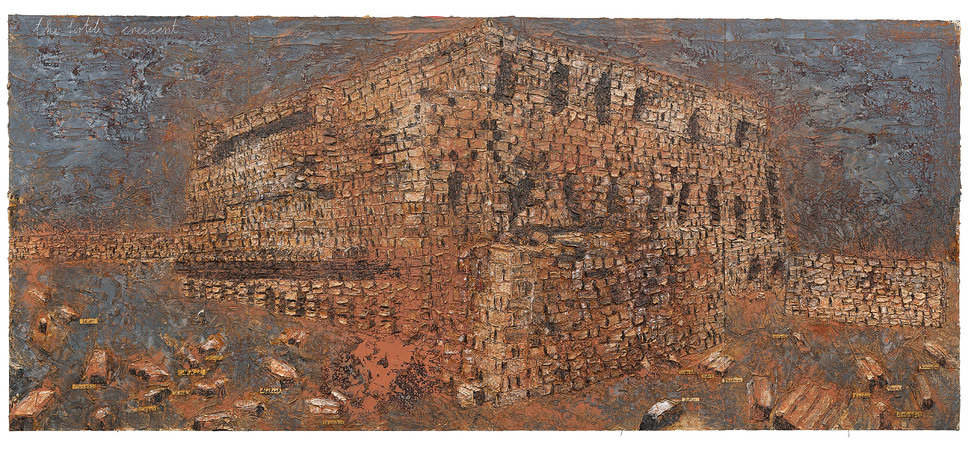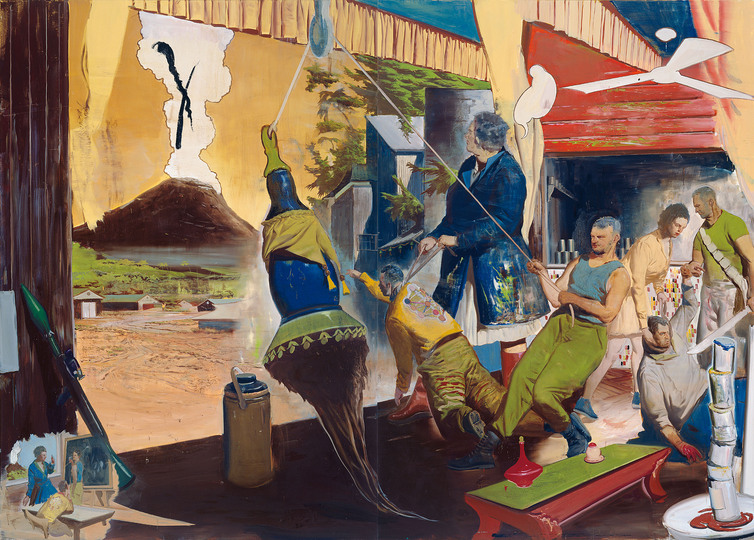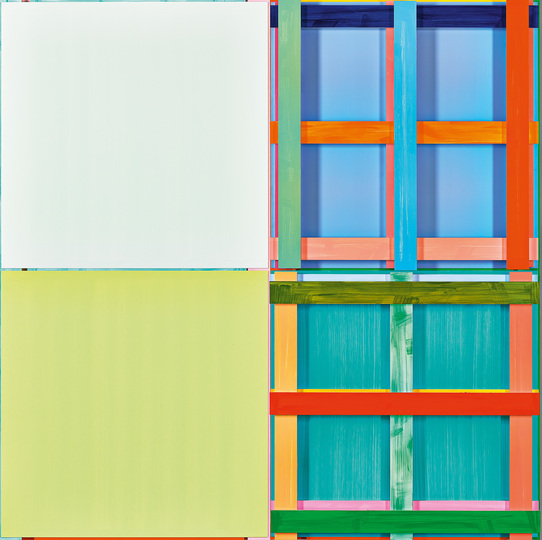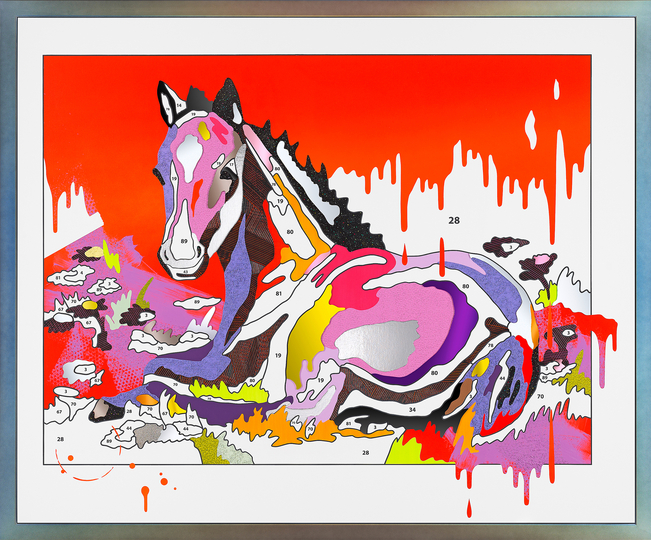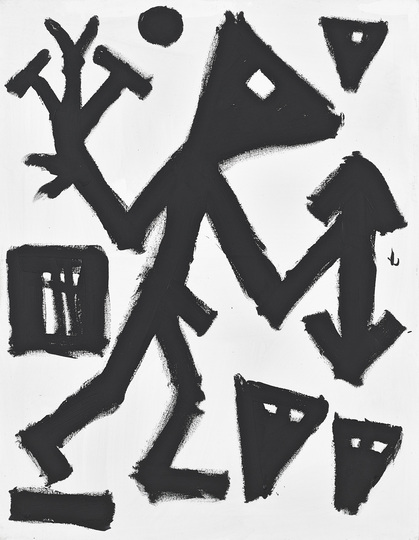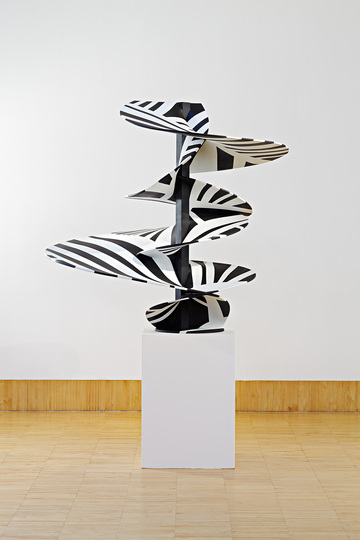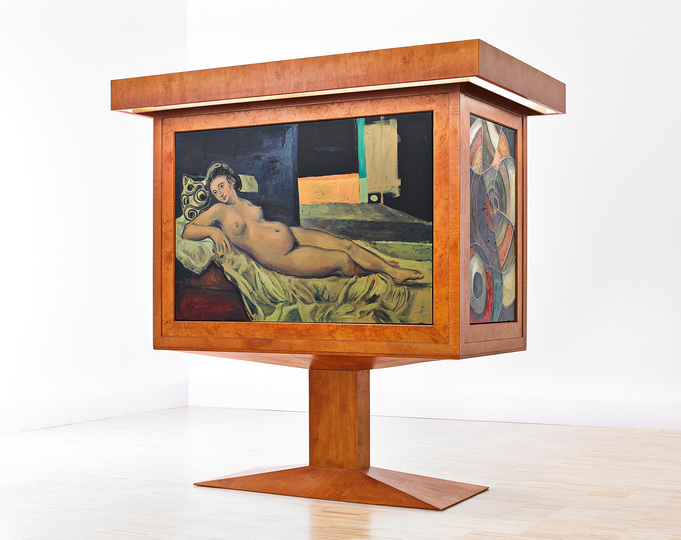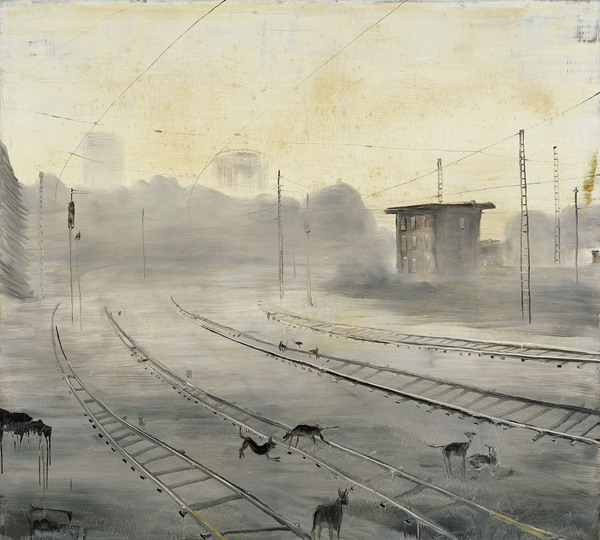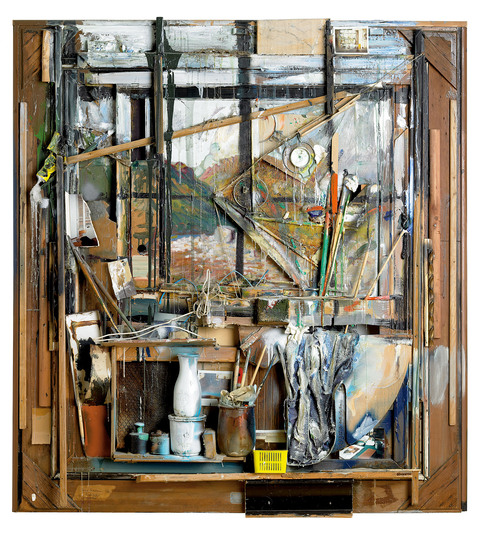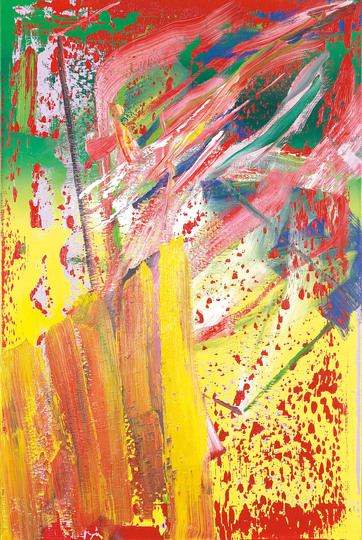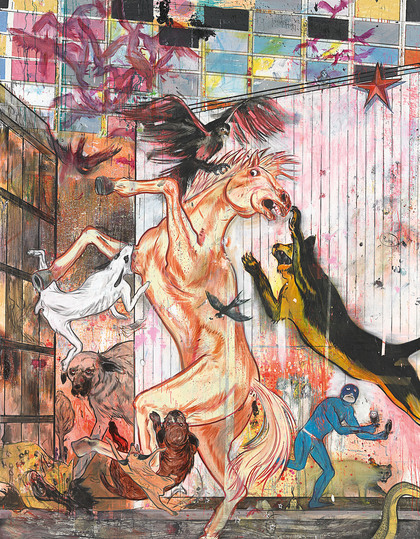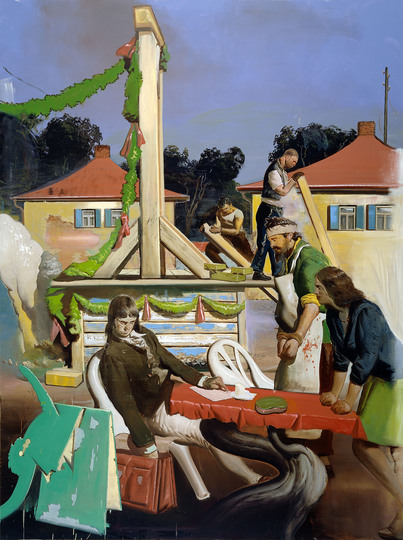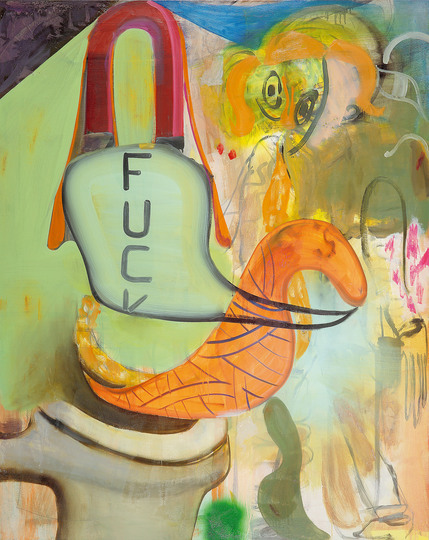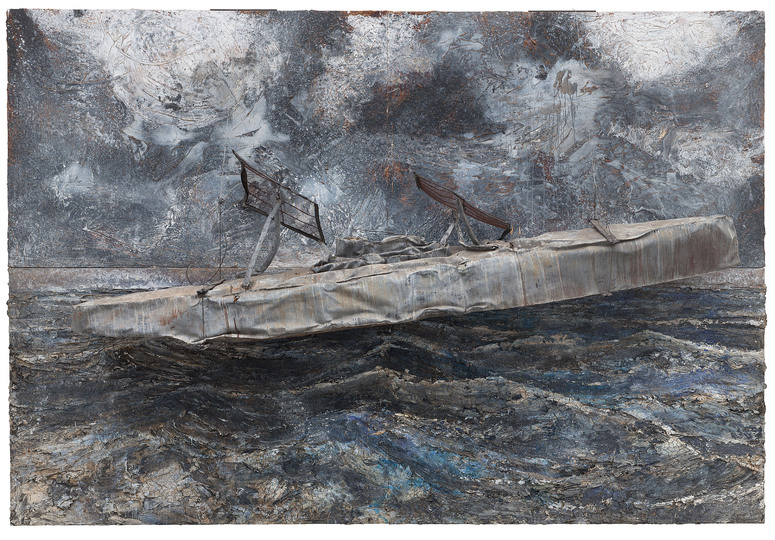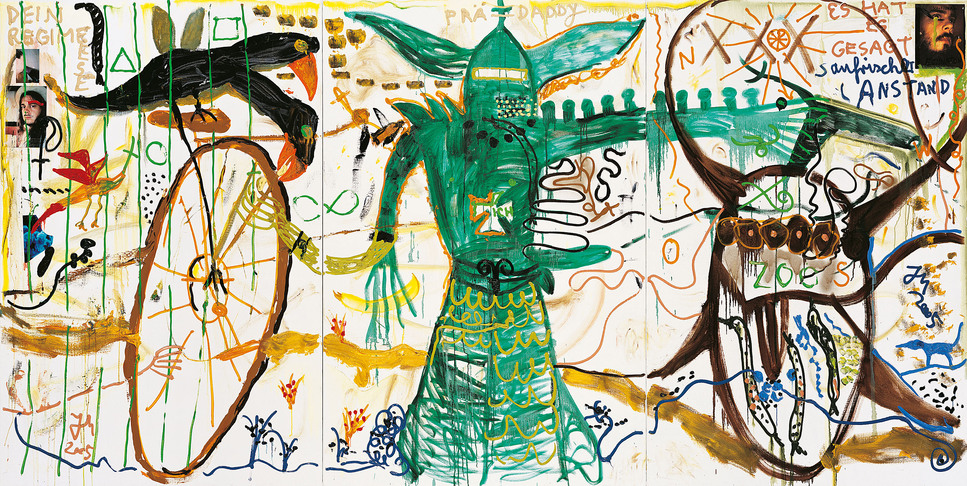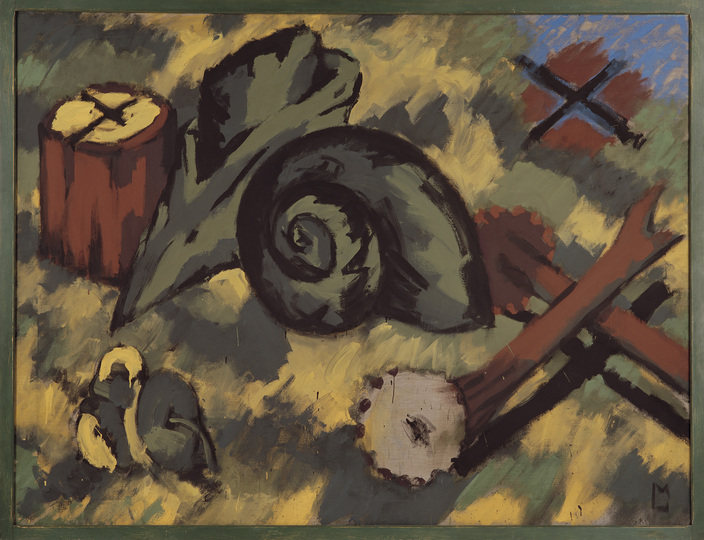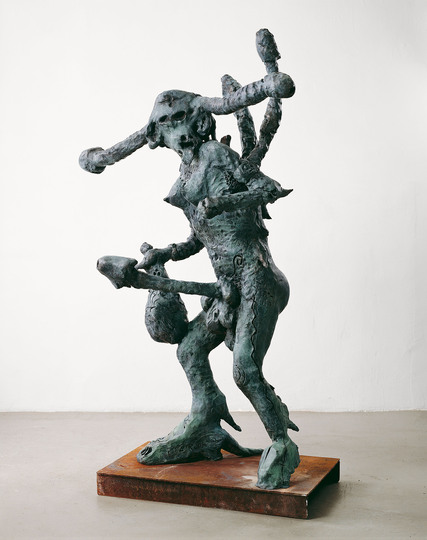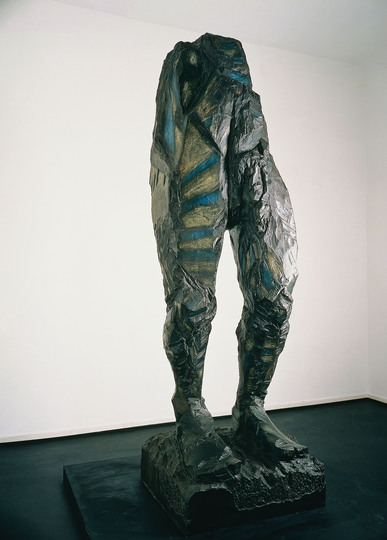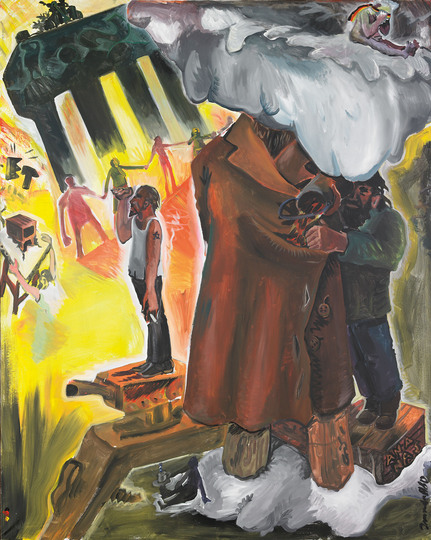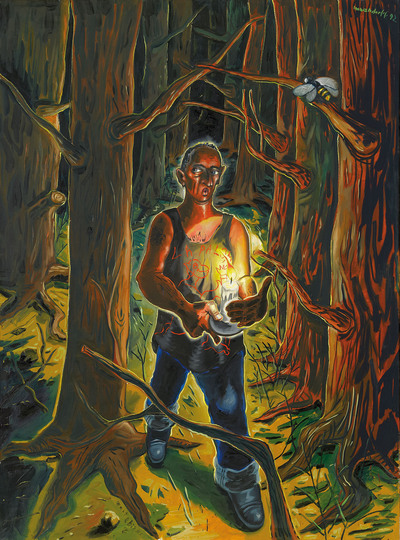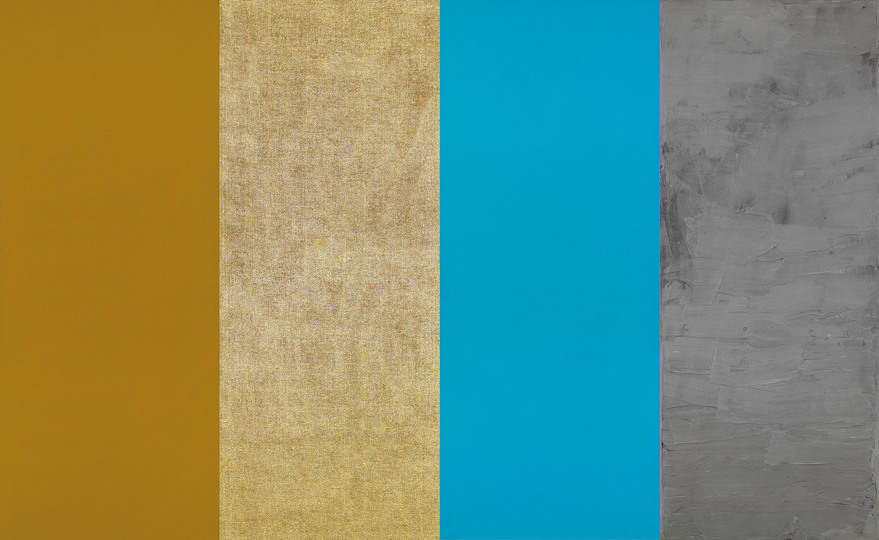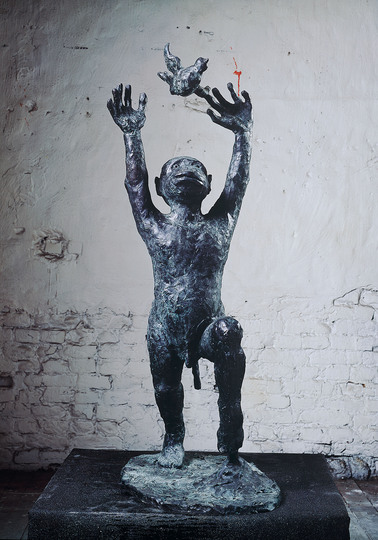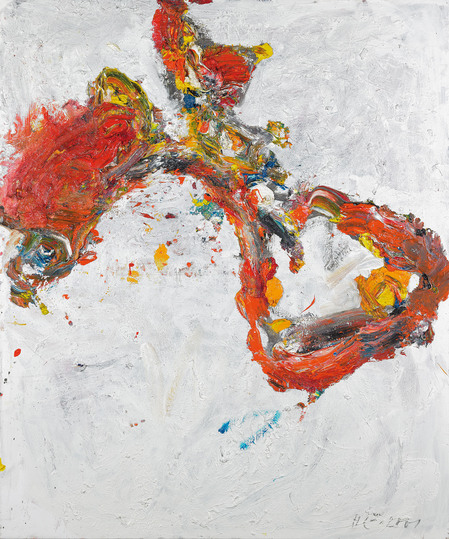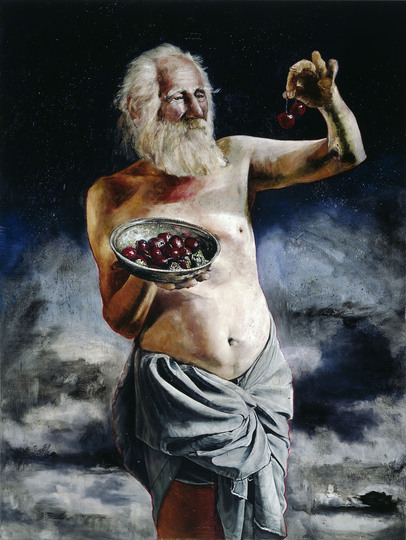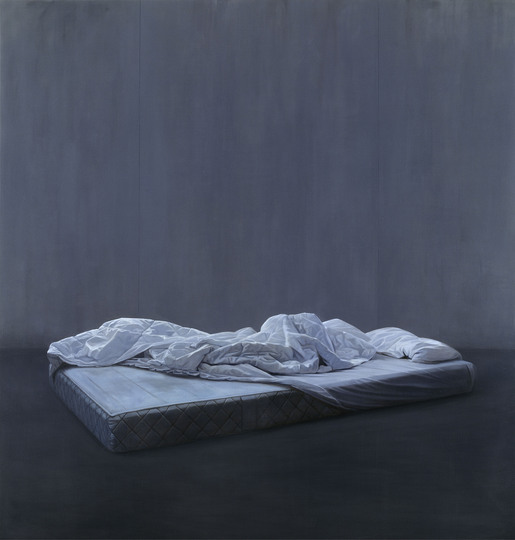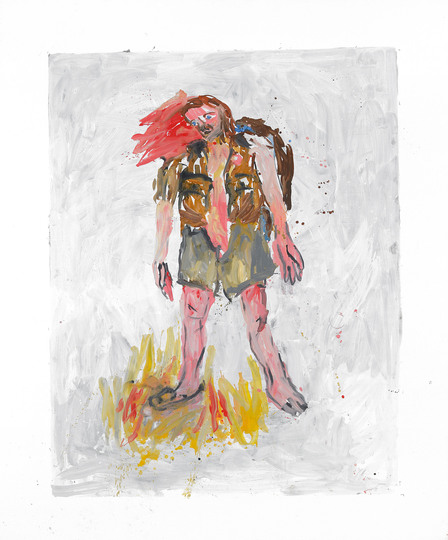German Art since 1960
German ‘paragons of painting’ such as Georg Baselitz, Jörg Immendorff and Markus Lüpertz have always been fascinated by ‘the figure’. They have dissected and inverted it, freed it of its significance and thus recharged it with new meaning. Their chosen themes are quite specific: German heroes and Deutscher Michel (the German equivalent of John Bull or Uncle Sam), the German imperial eagle and the German shepherd, the Brandenburg Gate, the Black Forest, a pair of antlers as hunting trophy and the fall of the Berlin Wall. In the work of Anselm Kiefer one meets profound poetry, but the history-laden lead of old warships, burnt books recalling the Nazi regime and the German oak also have their place in his art. Dope-heads and homeless people, punks, the Nazi salute, nationalist slogans and refugee boats – these are the motifs one encounters in the paintings of Daniel Richter and Jonathan Meese. Neo Rauch’s enigmatic art quotes a multitude of things, among them the German Romantic repertoire, but refute any attempt at comprehensive interpretation. A.R. Penck stylises the figure into symbols and holds a mirror to society. Even the almost abstract, gestural and action-laden paintins of Hartwig Ebersbach from Dresden makes reference to the dancing Kasper, the German equivalent of Punch, a figure beloved by German children. So much figuration and content finds its counterpoint in the paintings of Günther Förg and Imi Knoebel. Their formal approach to colour and surface is sober, clear and precise. German precision, one might say.
The work of Tobias Rehberger, in this exhibition his series of ‘mothers’ sculptures which can be freely copied and rebuilt, addresses the topical issue of originality and authorship in the arts. Anselm Reyle shows reclining horses in the style of painting-by-numbers books – the younger generation seems to have left behind post-war Germany.
Deutsche Kunst nach 1960 [German Art since 1960] was on show at Essl Museum, Austria, in 2015.
The work of Tobias Rehberger, in this exhibition his series of ‘mothers’ sculptures which can be freely copied and rebuilt, addresses the topical issue of originality and authorship in the arts. Anselm Reyle shows reclining horses in the style of painting-by-numbers books – the younger generation seems to have left behind post-war Germany.
Deutsche Kunst nach 1960 [German Art since 1960] was on show at Essl Museum, Austria, in 2015.
Magazines
